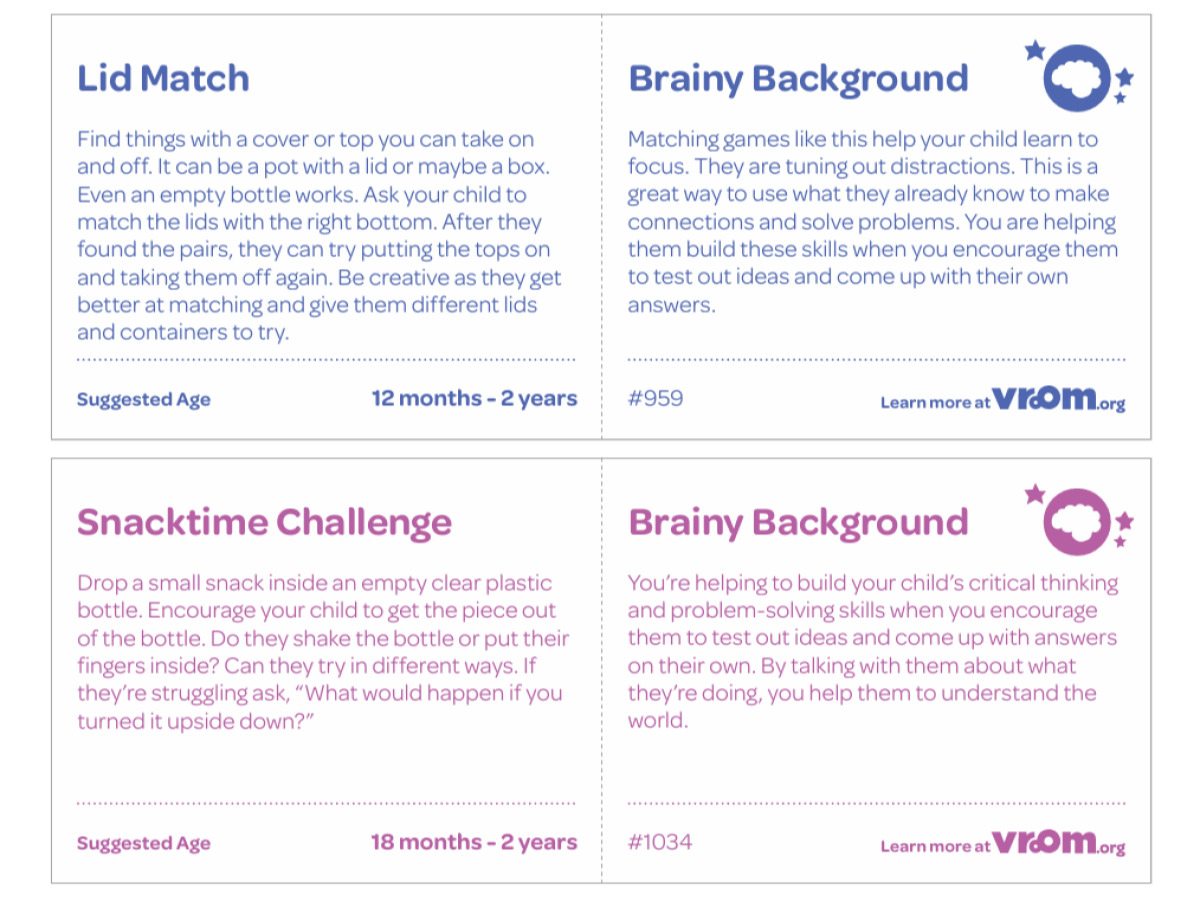Science in Everyday Moments
Vroom
April 10, 2025

Happy spring! This season of growth brings new sights, sounds, and smells for you and your child to explore. Maybe you'll chat about the colors of blooming flowers, or ask how the sun feels on their skin. You may even take turns finding silly shapes in the clouds!
Young children are curious about the world around them. Through the everyday moments you already share, you're helping your child learn like a scientist. Our partners at Vroom have some brain builders to help you turn nature into a classroom!
Kick and Play
Suggested Age: 0 – 6 months
Does your child like to kick their legs during tummy-time? Putting things like crumpled paper or a rolled up towel behind their legs can make it even more interesting. Talk with your baby about how it might feel or sound when they kick. What else could you use for kicking?
Space Explorer
Suggested Age: 0 – 12 months
Show your child the world from different points of view. When they’re in your arms, crouch down low or gently lift them up in the air. Describe what you’re doing and respond to their reactions. “You’re as high as the light! Look what you can see up here!”
Taste and Touch
Suggested Age: 0 – 12 months
Offer your child objects that are safe to put in their mouth, like wooden spoons or plastic cups. Talk about what they’re doing as they put the objects in their mouth or move them. Even if they can’t yet speak, they’re supported by your voice and interest in their actions.
Mirror Peekaboo
Suggested Age: 6-12 months
Do you have a mirror in your house? Hold your child and move in and out of the mirror, saying “Hello!” when you look in the mirror together and “Goodbye!” when you move away. Go fast and slow. Do they wave in the mirror or ask for more? Follow their cues.
Shake, Bang, and Roll
Suggested Age: 6-12 months
When your child picks up something safe, encourage them to “Shake, Bang, and Roll!” How many different ways do they explore the object? Talk to them about what they’re doing, “You shook the rattle and made a sound.”
Spoon Pick Up
Suggested Age: 6-12 months
When your child drops their spoon on the fl oor (and they will!), pick it up and give it back to them saying, “The spoon is falling down, down, down!” How long does it take until they drop it again? When they do, talk about falling down again.
Stop and Start the Music
Suggested Age: 12 months – 2 years
Set your radio to a music station and have your child turn it off and on. Every time they turn it on, start to dance—or move around—and say “on.” When they turn it off, stop moving and say “off.” Soon they will probably say “off” and “on” with you.
Where Is It?
Suggested Age: 12 months – 2 years
As you play with your child, take a toy or safe object and hide it as they watch you. Ask them, “Where is it?” and let them fi nd it. Then ask them if they can hide it and you fi nd it. Create a cheer to use when each of you fi nds the toy and keep taking turns.
Bye-Bye Bubbles!
Suggested Age: 12 months – 2 years
While cleaning up, give your child a soapy sponge and a large container with a little water so they can help wash safe kitchen items. Scrub up lots of bubbles together. When you’re ready say, “Bye bye bubbles!” and show them how to rinse the bubbles away. Encourage them to try it.
Open-Close, In-Out
Suggested Age: 12 months – 2 years
Working in the kitchen? Give your child some safe plastic containers to open and close. Say “open” and “close” as they play. Show them how to take things, like spoons, in and out of the containers. Say “in” and “out.” Make sure to talk to them about what they’re doing.
Lid Match
Suggested Age: 12 months – 2 years
Find things with a cover or top you can take on and off. It can be a pot with a lid or maybe a box. Even an empty bottle works. Ask your child to match the lids with the right bottom. After they found the pairs, they can try putting the tops on and taking them off again. Be creative as they get better at matching and give them different lids and containers to try.
Snacktime Challenge
Suggested Age: 18 months – 2 years
Drop a small snack inside an empty clear plastic bottle. Encourage your child to get the piece out of the bottle. Do they shake the bottle or put their fi ngers inside? Can they try in different ways. If they’re struggling ask, “What would happen if you turned it upside down?”
For even more brain builders for different age groups, check out Vroom’s Science Tip Sheet. It’s also available in Spanish!
